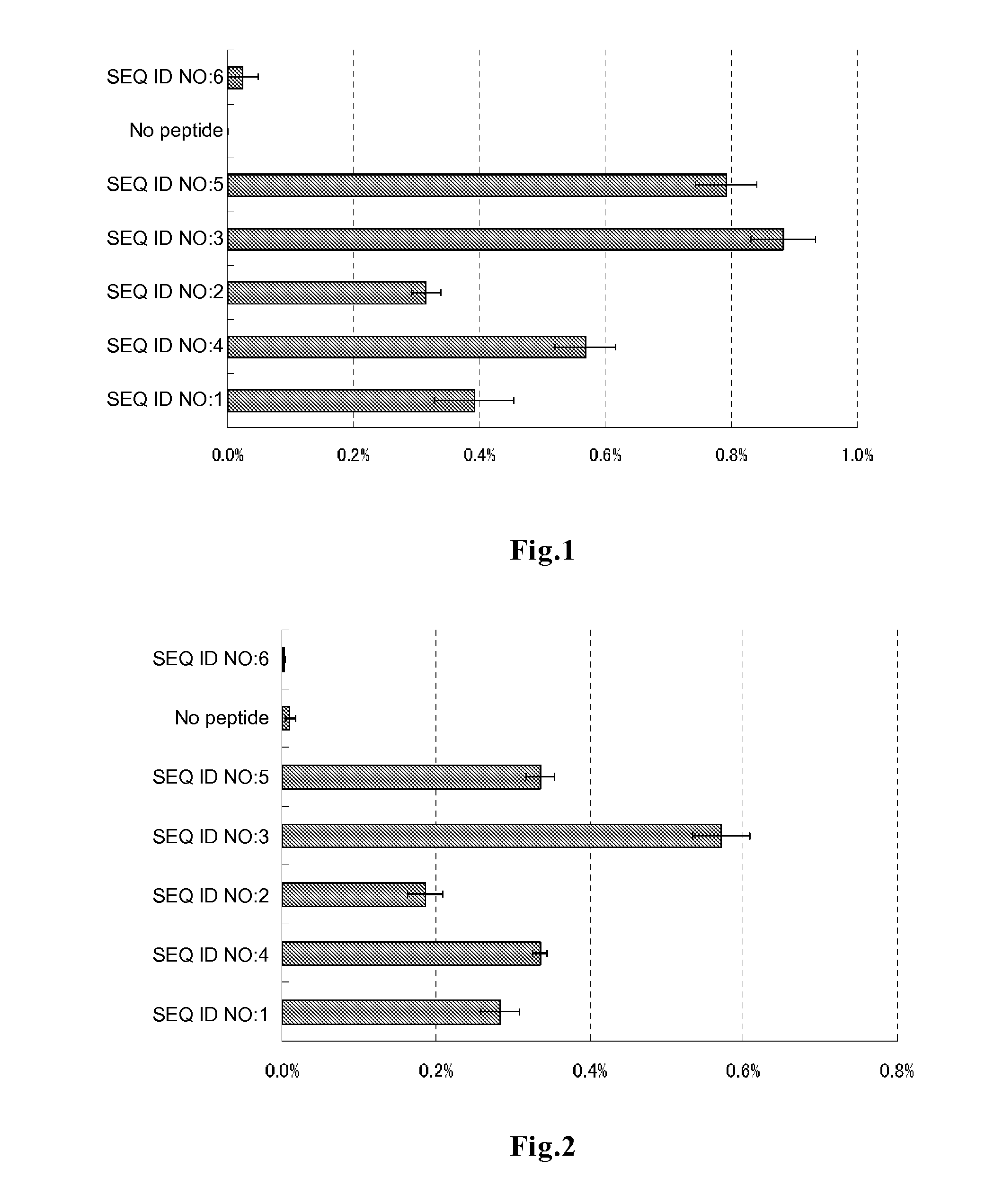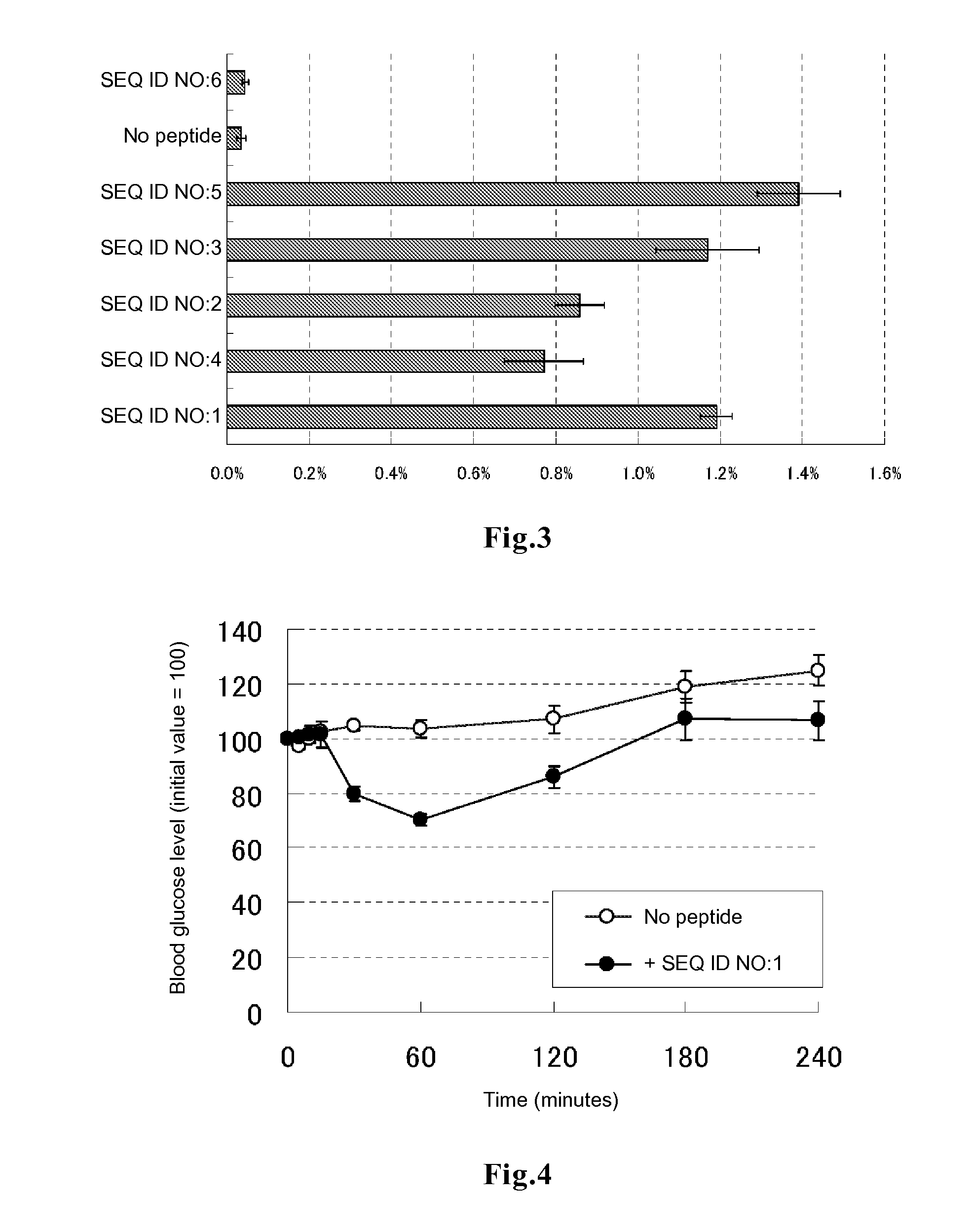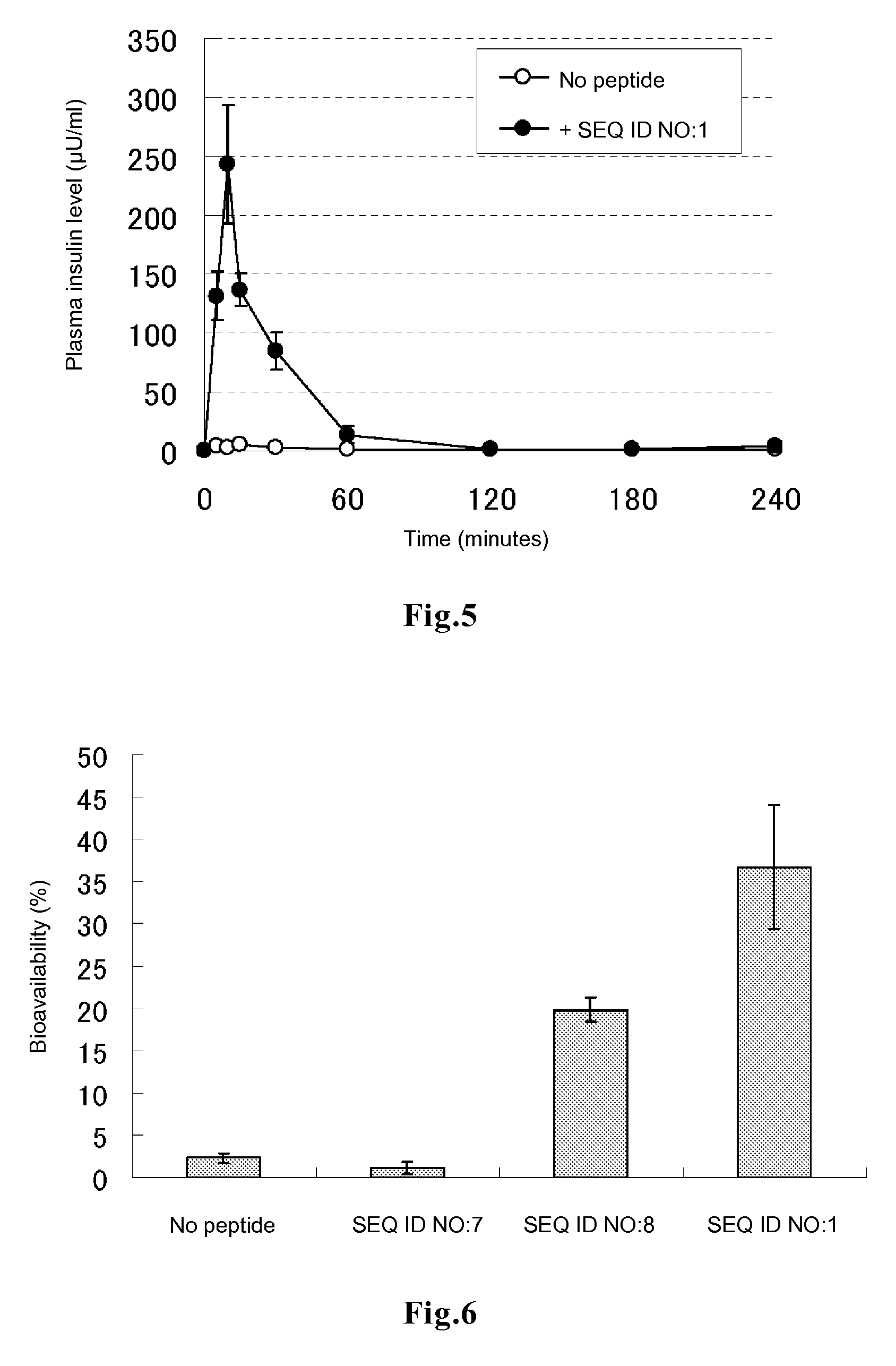Cell-penetrating peptides
a cell-penetrating peptide and cell-cell technology, applied in the field of new drugs, can solve the problems of many problems to be solved, small number of peptides can be used for clinical applications, and many hydrophilic physiological active substances are not used clinically, so as to achieve simple and patient-oriented pharmacotherapy
- Summary
- Abstract
- Description
- Claims
- Application Information
AI Technical Summary
Benefits of technology
Problems solved by technology
Method used
Image
Examples
example 1
Evaluation of Peptide Permeability into Cells
[0078]In DMEM medium supplemented with 10% FBS, 0.2 ml of HeLa cells were plated on a 96-well glass bottom plate, and the cells were cultured at 37° C. for 48 to 72 hours to allow the cells to adhere to the bottom surface. After 3 times of washing with 200 μl of PBS, 50 μl of DMEM medium containing each of the peptides of SEQ ID NOs:1 to 6 labeled with fluorescein at the amino terminus (contract synthesis by Sigma-Genosys) at a final concentration of 5 μM and FBS at a final concentration of 10% was added to each well. The plate was incubated in a CO2 incubator for 3 hours and then washed 3 times with DMEM medium supplemented with 10% FBS, followed by addition of 50 μl of a lysis solution (10 mM Tris-HCl, 5 mM EDTA, 100 mM NaCl, 1% SDS, 100 μg / ml proteinase K) and 1 hour of incubation at room temperature, to decompose the cells and the peptides incorporated into the cells. The whole lysis solution was recovered, and the amount of fluoresce...
example 2
Evaluation of Promotion of Insulin Transfer into Cells
[0080]In DMEM medium supplemented with 10% FBS, 0.2 ml of HeLa cells were plated on a 96-well glass bottom plate, and the cells were cultured at 37° C. for 48 to 72 hours to allow the cells to adhere to the bottom surface. After 3 times of washing with 200 μl of PBS, 50 μl of DMEM medium containing each of the peptides of SEQ ID NOs:1 to 6 labeled with fluorescein at the amino terminus (contract synthesis by Sigma-Genosys) at a final concentration of 5 rhodamine-labeled human insulin at a final concentration of 100 μg / ml and 10% FBS was added to each well. The plate was incubated in a CO2 incubator for 3 hours and then washed 3 times with DMEM medium supplemented with 10% FBS, followed by addition of 50 μl of a lysis solution (10 mM Tris-HCl, 5 mM EDTA, 100 mM NaCl, 1% SDS, 100 μg / ml proteinase K) and 1 hour of incubation at room temperature, to decompose the cells and the rhodamine-labeled insulin incorporated into the cells. Th...
example 3
Evaluation of Promotion of Transfer of Polystyrene Beads into Cells
[0085]In DMEM medium supplemented with 10% FBS, 0.2 ml of HeLa cells were plated on a 96-well glass bottom plate, and the cells were cultured at 37° C. for 48 to 72 hours to allow the cells to adhere to the bottom surface. After 3 times of washing with 200 μl of PBS, 50 μl of DMEM medium containing each of the peptides of SEQ ID NOs:1 to 6 labeled with fluorescein at the amino terminus (contract synthesis by Sigma-Genosys) at a final concentration of 1 μM, fluorescent polystyrene beads (Fluorospheres Carboxylated Microbeads, 0.1 μm; manufactured by Molecular probes, Inc.) at a final concentration of 1 μl / well and 10% FBS was added to each well. The plate was incubated in a CO2 incubator for 3 hours and then washed 3 times with DMEM medium supplemented with 10% FBS, followed by addition of 50 μl of a lysis solution (10 mM Tris-HCl, 5 mM EDTA, 100 mM NaCl, 1% SDS, 100 μg / ml proteinase K) and 1 hour of incubation at roo...
PUM
| Property | Measurement | Unit |
|---|---|---|
| Hydrophilicity | aaaaa | aaaaa |
Abstract
Description
Claims
Application Information
 Login to View More
Login to View More - R&D
- Intellectual Property
- Life Sciences
- Materials
- Tech Scout
- Unparalleled Data Quality
- Higher Quality Content
- 60% Fewer Hallucinations
Browse by: Latest US Patents, China's latest patents, Technical Efficacy Thesaurus, Application Domain, Technology Topic, Popular Technical Reports.
© 2025 PatSnap. All rights reserved.Legal|Privacy policy|Modern Slavery Act Transparency Statement|Sitemap|About US| Contact US: help@patsnap.com



